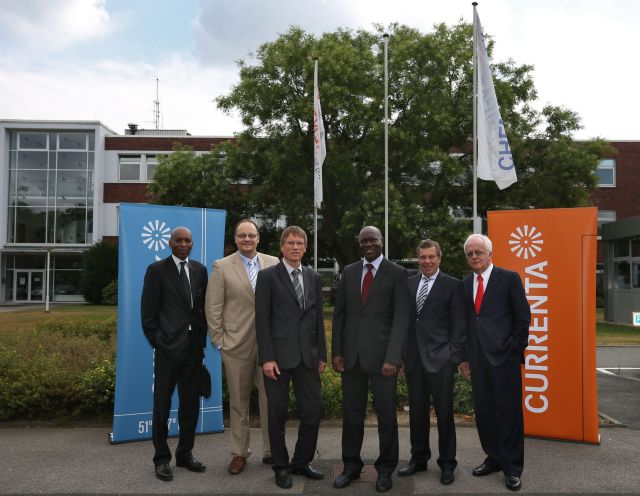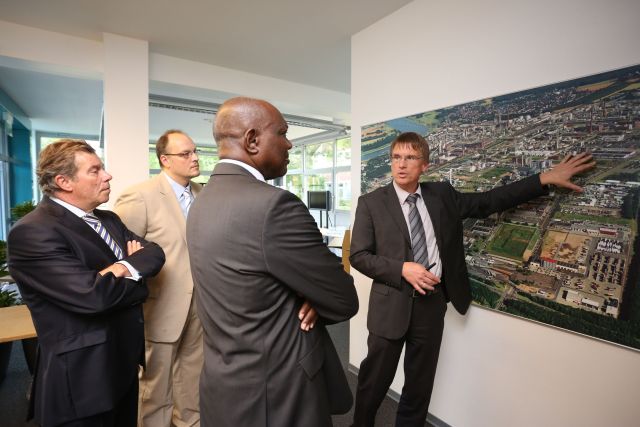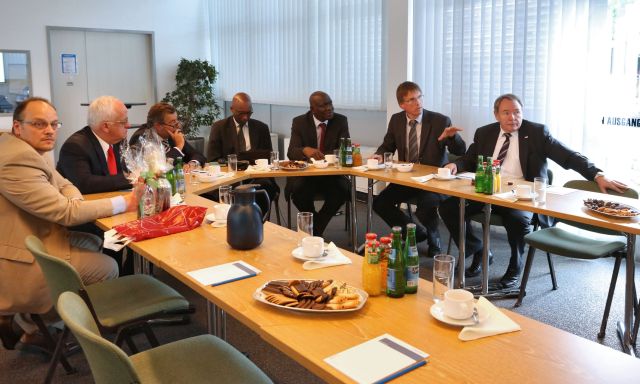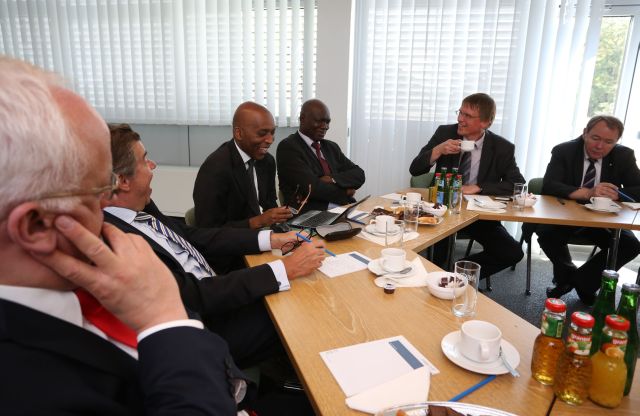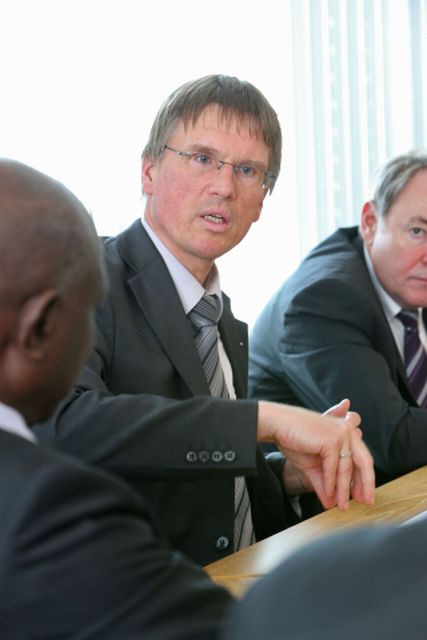Chempark Chemical Industries of Dormagen
A Visit in Original Size
On 8 August 2013 the Senegalese Ambassador Henri Antoine Turpin visited the Chempark Dormagen with representatives of SenGermany, the advisors Friedrich Garenfeld and Heinz-Martin Humme, and in the presence of the City Treasurer Kai Uffelmann.
It was a spectacular event for all visitors, since the Chempark Dormagen is over 100 years old and serves as a site for 10% of the chemical production of Germany on a surface area the size of 500 football pitches, and with 10.000 staff members, of whom 2.000 are apprentices and approximately 30% are women with a rising trend, which is an enormous challenge for the Management; this was explained to us by Dr. Ernst Grigat, Head of the industrial plants in Chempark located in Leverkusen, Dormagen and Krefeld-Uerdingen. Dr. Grigat reported for more than an hour on the performance of the companies resident there, but also on all difficulties arising in connection with the operation of such a gigantic plant, as in this magnitude a close cooperation with the neighbouring communities in energy supply and waste management is a must.
Chlorine reinforces the chemical industry
What is particularly interesting is the synergy generated via a cooperation of the resident enterprises in the form of a network. This became clear, for example, in the production of chlorine, as this product is an important intermediate module for the chemical industry and plays a significant role in the collaboration between the enterprises operating a plant on the Chempark premises. The production of chlorine in the Chempark makes it clear how an interlinking system works.
The Bayer Group
Most of the enterprises form part of the Bayer group, but a few undertakings like Lanxess are independent since 2005 and form part of the 40 DAX groups of companies which are listed on the German stock exchange. Other enterprises are Evonik, Axel Nobel, a Swedish company, Kemira from Finland. They also include service and logistics companies.
Moreover the required investments are surprisingly high, as the lifetime of such an investment is limited to 30 up to 40 years. This means that around 500 million Euro must be invested each year.
Ibrahim Guèye
